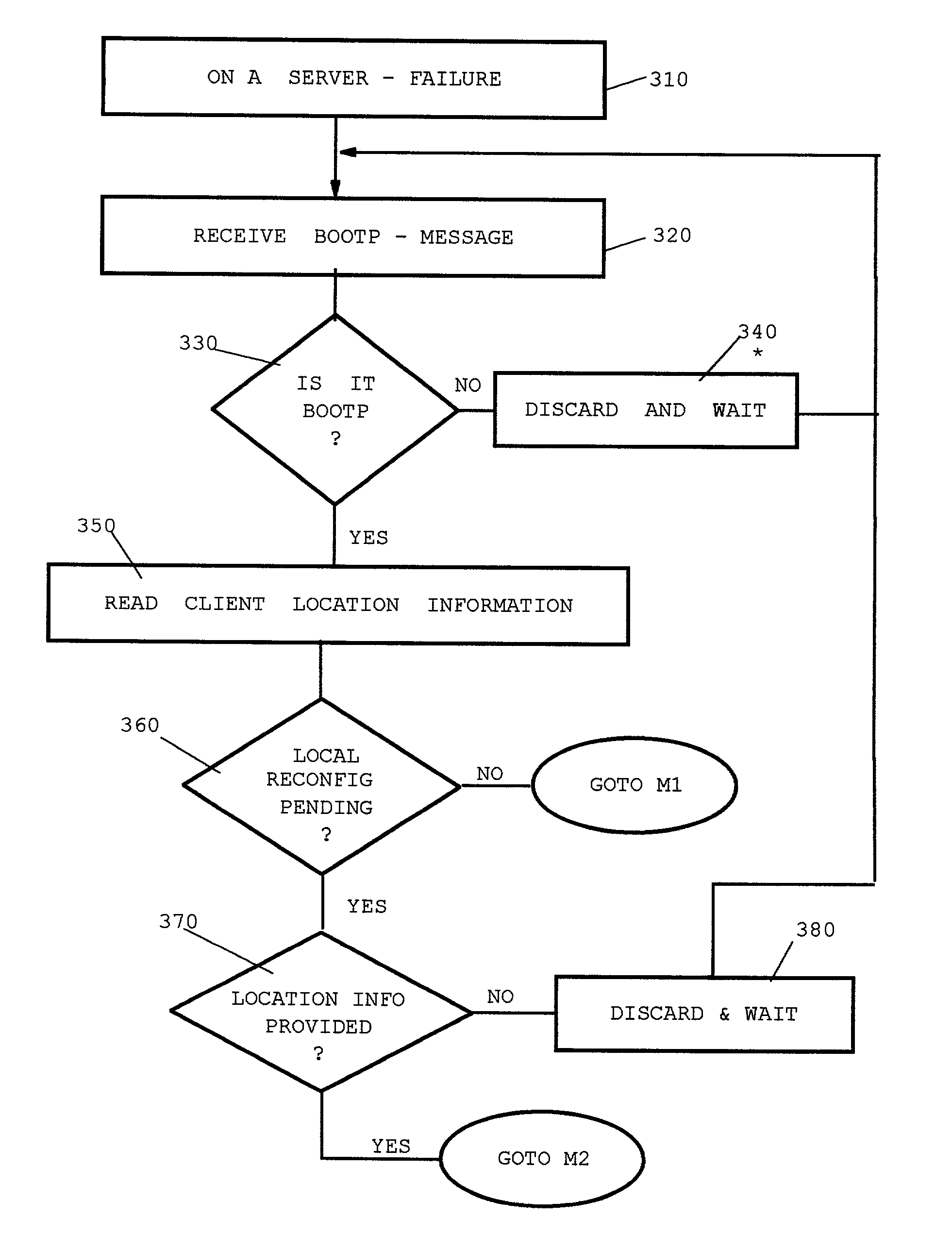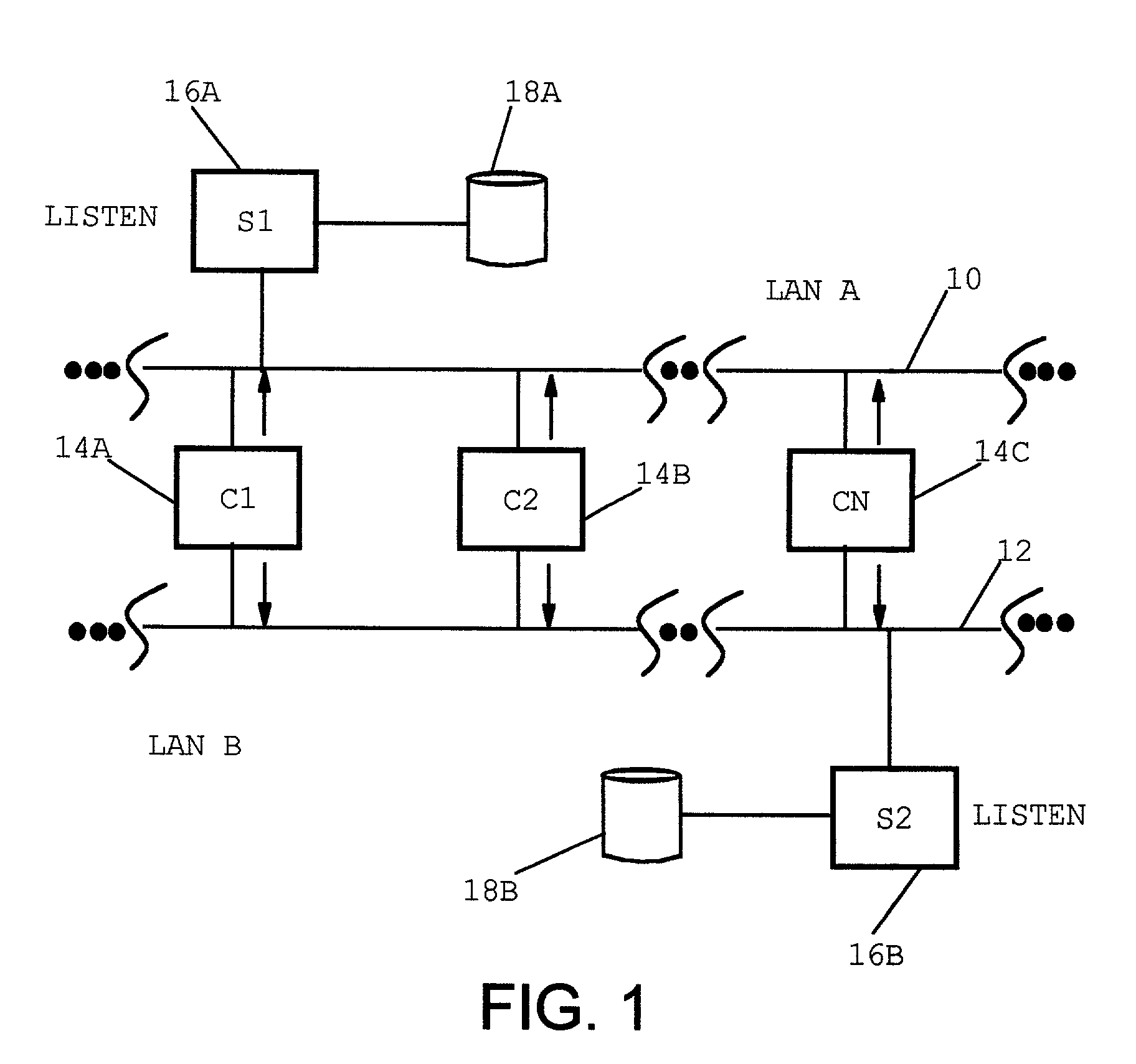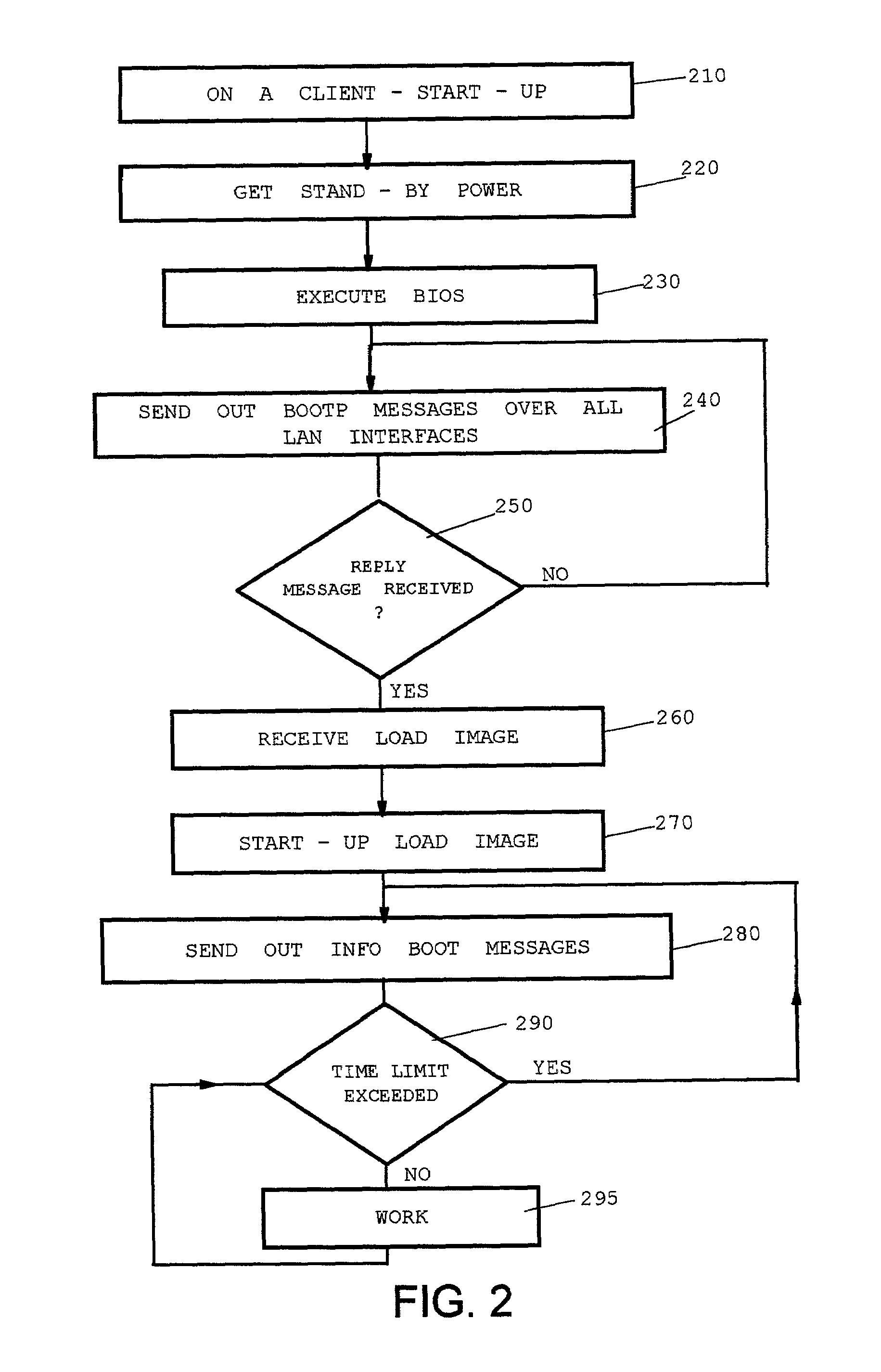Extension of the BOOTP protocol towards automatic reconfiguration
- Summary
- Abstract
- Description
- Claims
- Application Information
AI Technical Summary
Benefits of technology
Problems solved by technology
Method used
Image
Examples
Embodiment Construction
[0034]The embodiment described next is based on the following concepts:[0035]1. Vendor-specific extensions to the content of a BOOTP are defined. These data may contain “location” information, in particular left or right side detection. Only a subset of the embedded nodes may be capable of supplying this information.[0036]2. A variant of a BOOTP message called an “informational BOOTP”, or in short, InfoBOOT message is defined that is compatible in format to the original BOOTP specification. An additional flag designates it as an InfoBOOT message. Additional vendor-specific data is defined for this type of message.[0037]3. Original BOOTP message are still sent out by the BIOS. A server host waits until it receives a BOOTP or InfoBOOT containing location data. Based on this data it configures its LAN interfaces. All other messages are discarded until this point in time. This specifically solves the second problem mentioned above.[0038]4. InfoBOOT messages are sent out when the embedde...
PUM
 Login to View More
Login to View More Abstract
Description
Claims
Application Information
 Login to View More
Login to View More - R&D
- Intellectual Property
- Life Sciences
- Materials
- Tech Scout
- Unparalleled Data Quality
- Higher Quality Content
- 60% Fewer Hallucinations
Browse by: Latest US Patents, China's latest patents, Technical Efficacy Thesaurus, Application Domain, Technology Topic, Popular Technical Reports.
© 2025 PatSnap. All rights reserved.Legal|Privacy policy|Modern Slavery Act Transparency Statement|Sitemap|About US| Contact US: help@patsnap.com



